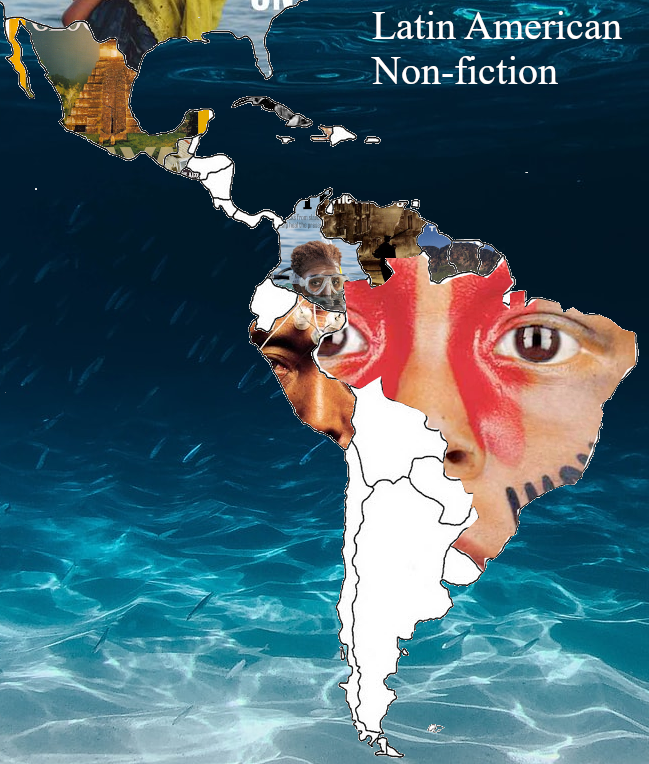Fictional and Non-fictional Latin American Imaginations
This is a project for HIS 363E: Mapping Latin America at UT Austin. In this course, we have spent the semester analyzing various historical maps of the geographic area referred to as ‘Latin America.’ This project seeks to understand my own perception of Latin America through the fiction and non-fiction works I’ve read concerning the area. I am doing this by creating maps of the works I have read that concern Latin America and the Latinx Identity. On these maps, I am shading in countries where I have read something concerning the nation.
Parameters
I divded the works I’ve read into two groups: fiction and non-fiction. In reality, the line between these two categories isn’t always clear. For my purposes, I included poetry and lyrical prose
in the fiction category.
What constitutes a reading or book in this project? I am excluding texts read in HIS 363E because I feel like this wouldn’t provide a fair reflection of my reading tastes and literary blindspots.
I am including poetry books, magazine articles (specifically substantive articles from the National Geographic magazine), and books.
I used a standard map of South and Central America, extending all the way up to the United States. As Jose Moya notes in “Latin America: The Limitations and Meaning of a Historical Category,”
the concept of Latin America is not a real geographic area. Rather, it is a series of cultural ideas about identity and politics in the United States. I included the Southern United states because I
believe that the literary tradition of this area is contiguous with many Latin American literary traditions.
I affiliated books with countries for one of two reasons. First, if the author was from the region, I included the work even if it did not necessarily describe events in the nation.
This set of circumstances applies to things like the poetry of Pablo Neruda. Second, I included works in a nation if they were set there, even if the author was not from there. This
applies to most of the nonfiction materials. Some materials, like “One Hundred Years of Solitude,” fit into both categories.
These maps presented me with some unique and difficult problems. Some materials were transnational or concerned borderlands. Others focuses on rather local events and it felt
strange to apply that work to an entire area.
This project presented particular issues with the differences between fiction and non-fiction, national borders, and Latinx identity.
Outcome
Here is the fiction map:

This map has significant blank spots in central America; no nation between Mexico and Colombia is represented. This map is also blank in the Guiana shield and in several South American countries.
Here is the non-fiction map:

This map also has some blank spots in central America. Unlike the other map, this map has absences in Argentina and Chile.
Analysis
This project helped me to reveal blind spots in both my fiction and non-fiction reading. It serves as a to-read list. It is also telling what places are absent from the imagination of Latin America. Central American nations may often be left out of fictional stories associated with Latin America that are commonly read by people in the United States.
This project also helped me to understand broader trends in Latin American writing. Many fictional stories were hyper-local and did not describe an entire nation. Non-fiction writings were often transnational as they described climactic or environmental issues. Participating in such a project demonstrates what places people imagine to be a) Latin American and b) worth hearing about. While a list might serve a similar purpose, creating a map of what you’ve read helps you to visualize particular regions that may have been ignored, rather than discrete countries.
Replication
If you are interesting in creating such a map to reveal blank spots in your reading habits, here are the instructions.
I used a software called GIMP. You can find information about how to download GIMP here.
After downloading GIMP, save images of the map and the book covers that you’d like to populate in the national borders.
I used this tutorial to learn how to use the fuzzy select tool. This tutorial uses
a United States map and family photos. Substitute the map for a map of Latin America and substitute the family photos for
book covers.